
The North Pole, also known as the Geographic North Pole, Terrestrial North Pole or 90th Parallel North, is the point in the Northern Hemisphere where the Earth's axis of rotation meets its surface. It is called the True North Pole to distinguish from the Magnetic North Pole.

RV Polarstern is a German research icebreaker of the Alfred Wegener Institute for Polar and Marine Research (AWI) in Bremerhaven, Germany. Polarstern was built by Howaldtswerke-Deutsche Werft in Kiel and Nobiskrug in Rendsburg, was commissioned in 1982, and is mainly used for research in the Arctic and Antarctica. The ship has a length of 118 metres and is a double-hulled icebreaker. She is operational at temperatures as low as −50 °C (−58 °F). Polarstern can break through ice 1.5 m thick at a speed of 5 knots. Thicker ice of up to 3 m (9.8 ft) can be broken by ramming.

Drift ice, also called brash ice, is sea ice that is not attached to the shoreline or any other fixed object. Unlike fast ice, which is "fastened" to a fixed object, drift ice is carried along by winds and sea currents, hence its name. When drift ice is driven together into a large single mass, it is called pack ice. Wind and currents can pile up that ice to form ridges up to dozens of metres in thickness. These represent a challenge for icebreakers and offshore structures operating in cold oceans and seas.

Kapitan Dranitsyn is a Russian icebreaker, built in Finland for the former Soviet Union. Since October 1995 she has been used as a research vessel by AARI. She also offers excursions in the Arctic Ocean north of Russia.
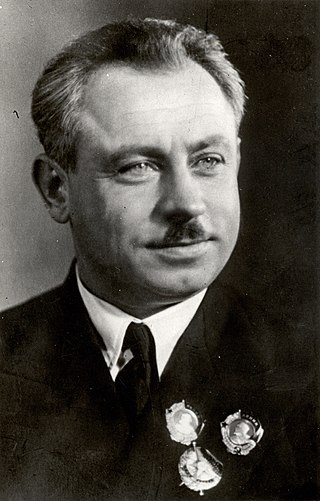
Ivan Dmitriyevich Papanin was a Soviet polar explorer, scientist, Counter Admiral, and twice Hero of the Soviet Union, who was awarded nine Orders of Lenin.
The Arctic and Antarctic Research Institute, or AARI is the oldest and largest Russian research institute in the field of comprehensive studies of Arctic and Antarctica. It is located in Saint Petersburg.
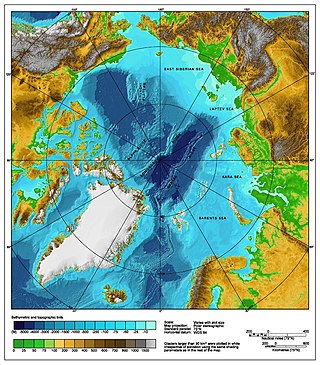
Arktika 2007 was a 2007 expedition in which Russia performed the first ever crewed descent to the ocean bottom at the North Pole, as part of research related to the 2001 Russian territorial claim, one of many territorial claims in the Arctic, made possible, in part, because of Arctic shrinkage. As well as dropping a titanium tube containing the Russian flag, the submersibles collected specimens of Arctic flora and fauna and apparently recorded video of the dives. The "North Pole-35" manned drifting ice station was established.
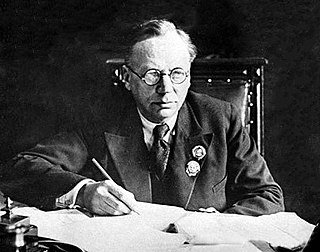
Vladimir Yulyevich Wiese was a Russian scientist of German descent who devoted his life to the study of the Arctic ice pack. His name is associated with the Scientific Prediction of Ice Conditions theory. Wiese was a member of the Soviet Arctic Institute and an authority on polar oceanography. He was also the founder of the Geographico-hydrological School of Oceanography.
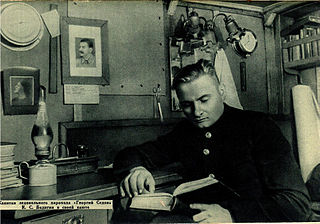
Captain Konstantin Sergeyevich Badygin was a Soviet naval officer, explorer, author, and scientist.
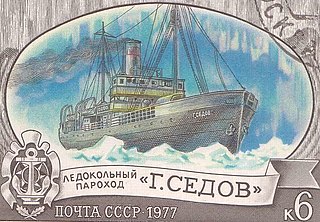
The Georgiy Sedov was a Soviet ice-breaker fitted with steam engines. She was originally the Newfoundland seal fishery support vessel Beothic and was renamed after Russian captain and polar explorer Georgy Yakovlevich Sedov in 1915.

Taymyr was an icebreaking steamer of 1,200 tons built for the Russian Imperial Navy at Saint Petersburg in 1909. It was named after the Taymyr Peninsula.

Xue Long is a Chinese icebreaking research vessel. Built in 1993 at Kherson Shipyard in Ukraine, she was converted from an Arctic cargo ship to a polar research and re-supply vessel by Hudong–Zhonghua Shipbuilding of Shanghai by the mid-1990s. The vessel was extensively upgraded in 2007 and 2013.
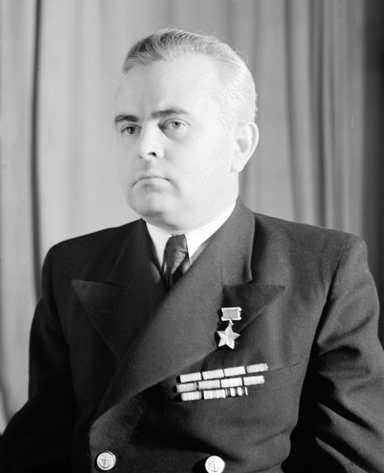
Pyotr Petrovich Shirshov was a Soviet oceanographer, hydrobiologist, polar explorer, statesman, academician (1939), the first minister of Ministry of Maritime Fleet of the USSR and Hero of the Soviet Union (1938).

Fletcher's Ice Island or T-3 was an iceberg discovered by U.S. Air Force Colonel Joseph O. Fletcher. Between 1952 and 1978 it was used as a staffed scientific drift station that included huts, a power plant, and a runway for wheeled aircraft. The iceberg was a thick tabular sheet of glacial ice that drifted throughout the central Arctic Ocean in a clockwise direction. First inhabited in 1952 as an arctic weather report station, it was abandoned in 1954 but reinhabited on two subsequent occasions. The station was inhabited mainly by scientists along with a few military crewmen and was resupplied during its existence primarily by military planes operating from Utqiagvik, Alaska. The iceberg was later occupied by the Naval Arctic Research Laboratory, and served as a base of operations for the Navy's arctic research projects such as sea bottom and ocean swell studies, seismographic activities, meteorological studies and other classified projects under the direction of the Department of Defense. Before the era of satellites, the research station on T-3 had been a valuable site for measurements of the atmosphere in the Arctic.

North Pole-1 was the world's first Soviet manned drifting station in the Arctic Ocean, primarily used for research.
North Pole-37 was the 37th Russian manned drifting station, primarily used for polar research.
North Pole-36 was the 36th Russian manned drifting station, primarily used for Arctic research from September 2008 until August 2009.
North Pole-2 was a Soviet drifting ice station. It was established on April 2, 1950 and drifted for about a year between the Bering Strait and the North Pole. It was closed on April 11, 1951, after the piece of ice it was based on broke into two. The commander of the station was Mikhail Somov, who was made the Hero of the Soviet Union for his role in the expedition.















